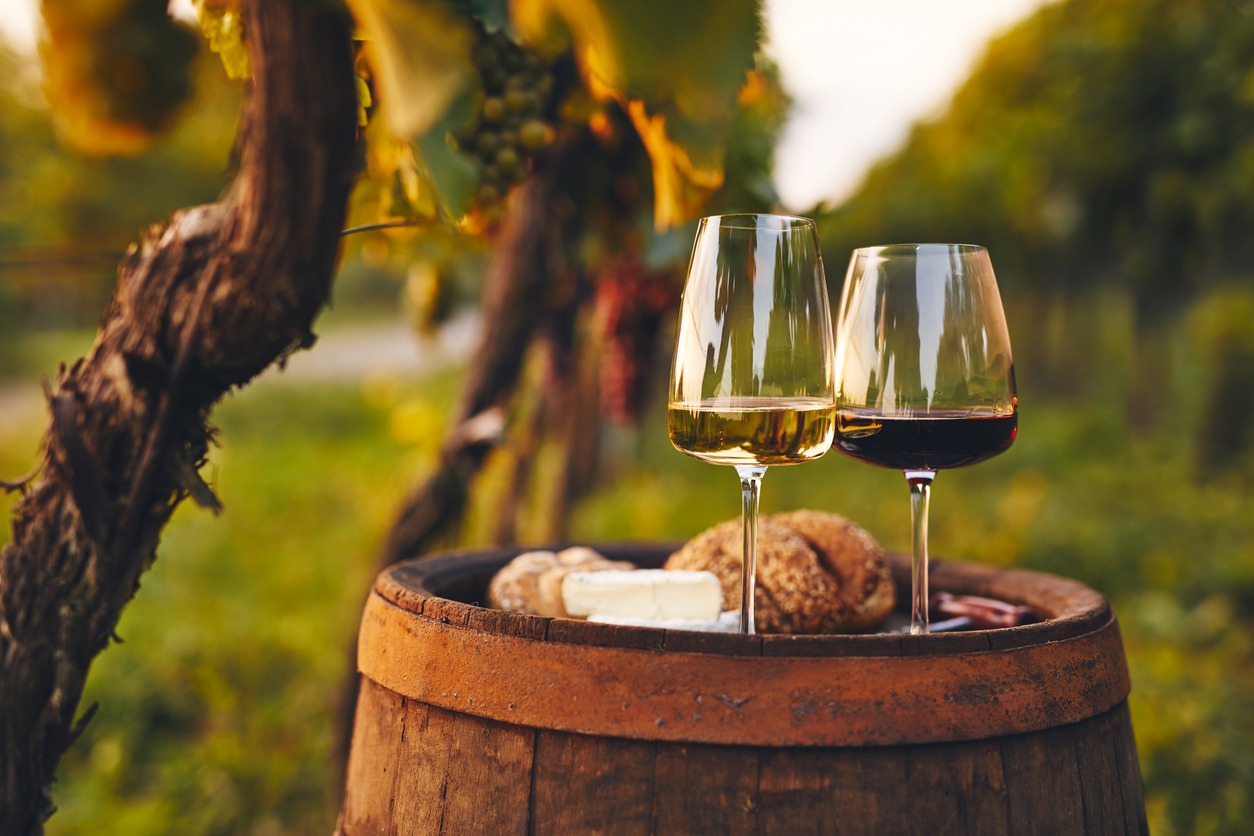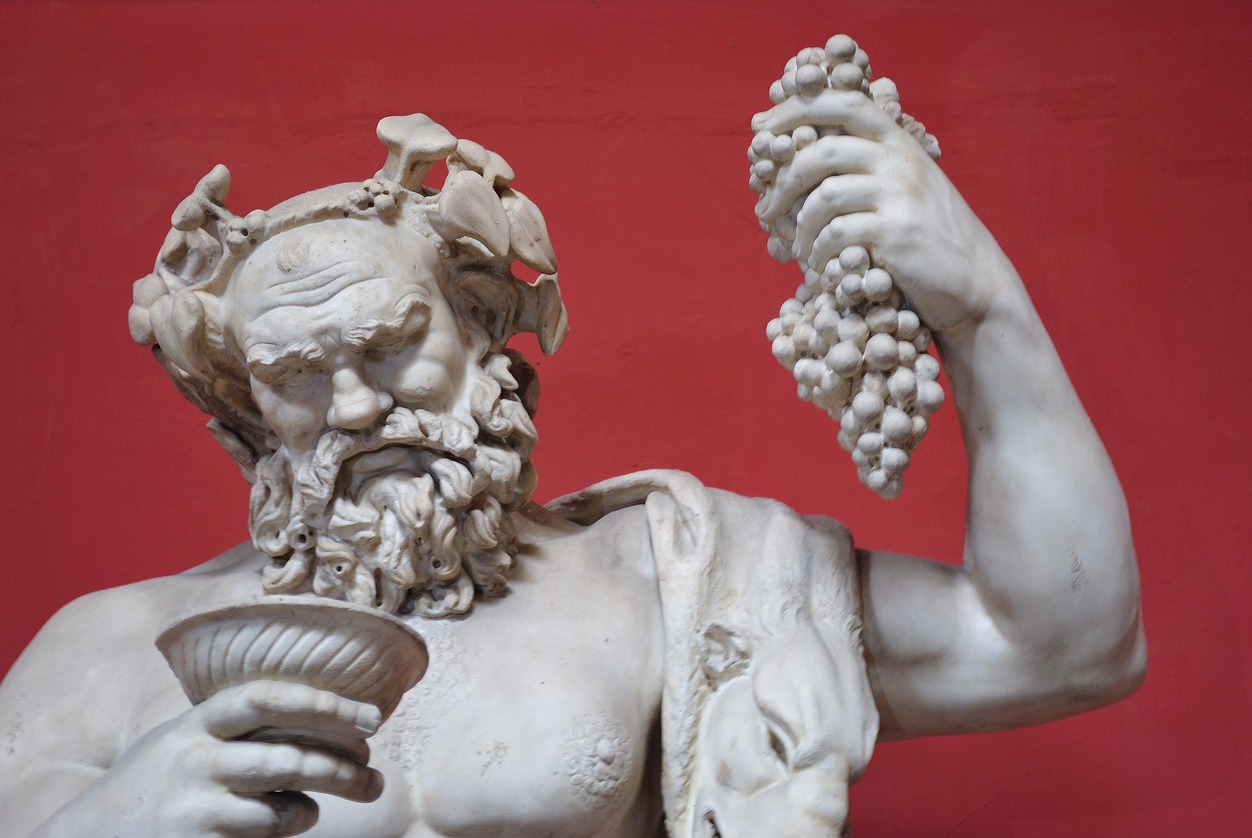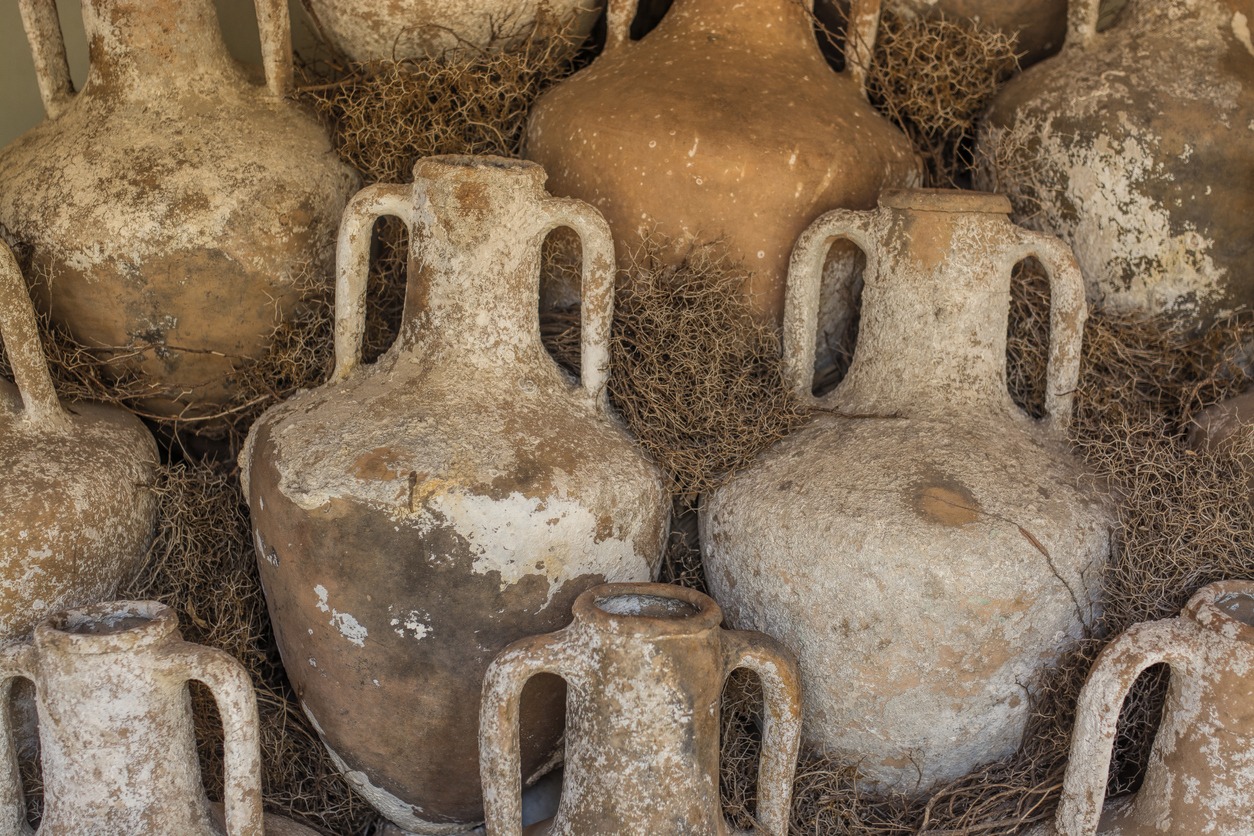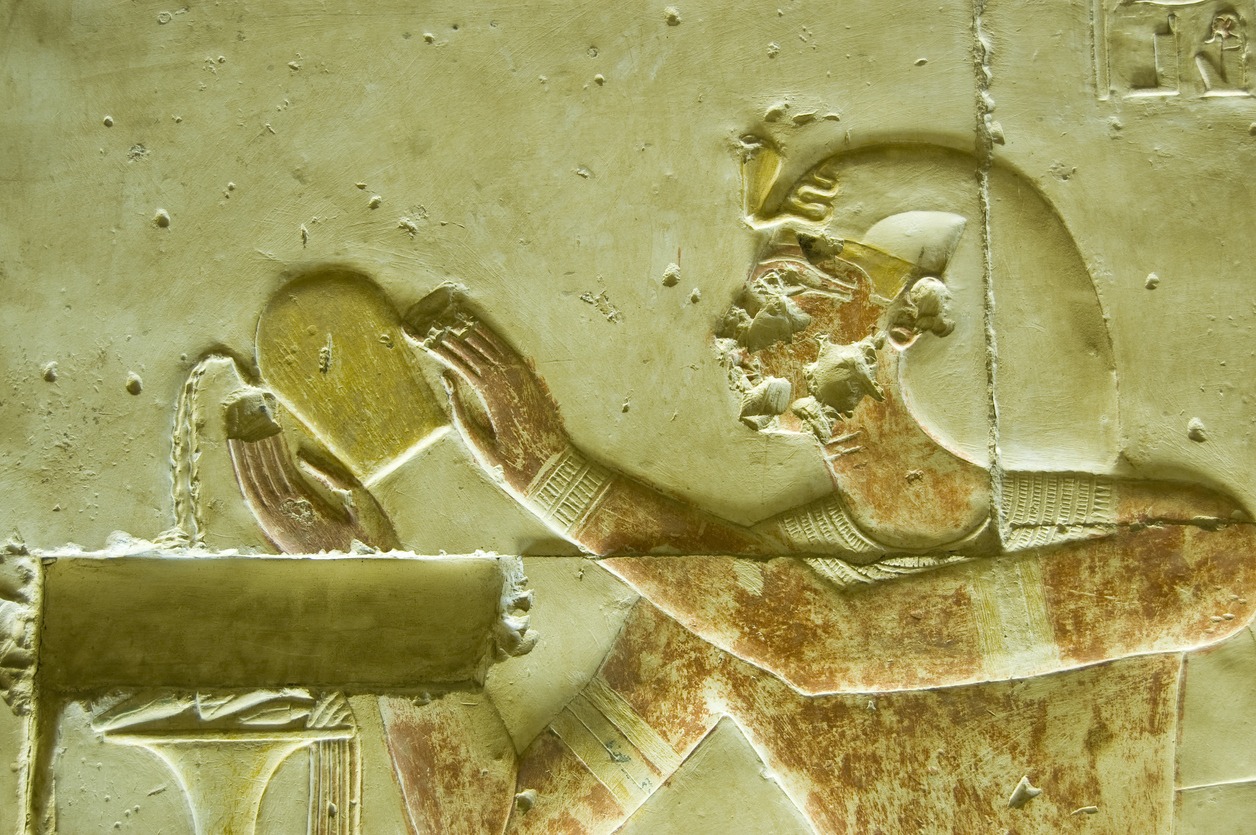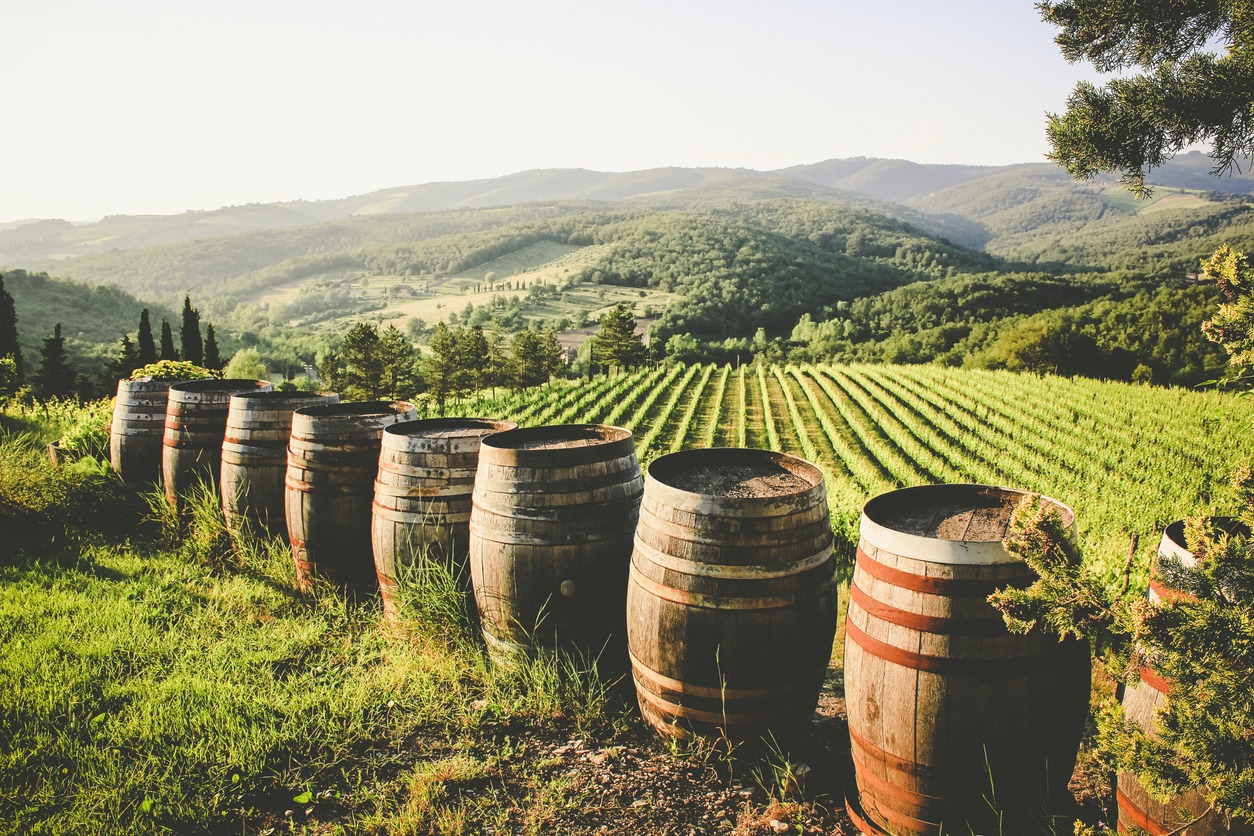For thousands of years, wine has remained a beloved beverage among mankind. Its popularity can be attributed to its delightful taste, nutritional benefits, and its intoxicating effects.
Out of all alcoholic drinks, wine has had a profound impact on society. The exchange of wine between cultures paved the way for the spread of religious and philosophical ideas throughout Europe. Its significance is evident in various biblical references.
Even today, wine holds special significance in Christianity, where it symbolizes the blood of Christ. This tradition highlights the historical importance of wine throughout the ages. In the past, a thriving wine industry was indicative of a prosperous and advanced society, showcasing the development of a country. Some even say that the foundation of Western society was built upon wine.
So, how far long did wine exist? While it’s really impossible to pinpoint who invented wine, we can discuss how, when, and where it was invented, including the ancient societies responsible for it.
Who First Invented Wine and How Did They Do It?
The origin of wine is a subject that remains shrouded in mystery, as scientists and historians concur that wine was not precisely invented but rather accidentally created. It is believed that ancient people made the discovery when they encountered grapes that had naturally fermented and spoiled, resulting in fermented grape juice. This accidental finding is considered the birth of the winemaking process, forming the basis for various accounts of wine’s origins.
The most reliable evidence points towards several regions, such as China, Georgia, Armenia, and possibly Iran, as potential birthplaces of wine.
The oldest fossil proto-wines that predate the use of grapes were uncovered in China around 7000 BC. Additionally, evidence of ancient wine production has been discovered in Georgia and other regions, dating back to approximately 6000 BC (marking the earliest traces of grape wine). In the West Azerbaijan province of Iran, wine-related artifacts date as far back as 5000 BC. Similarly, Armenia is known for its large-scale wine production, with evidence dating to around 4100 BC. Sicily, too, has a winemaking history reaching back to roughly 4000 BC.
Furthermore, in ancient China, around 7000 BC, there were indications of a fermented drink made from a combination of grapes and rice, often compared to wine. As such, the true origin of wine remains a fascinating tale lost in the annals of time.
Legends Regarding Wine Discovery
There are many origin myths about the discovery of wine:
Bible – The book of Genesis first mentioned the production of wine by Noah. After the Great Flood, Noah is said to have cultivated a vineyard, made wine, and become intoxicated (Genesis 9:20-21). Wine and fermentation are traditionally attributed to Noah as this is the first time wine and drunkenness are mentioned in the Bible.
Greek mythology – According to Greek mythology, Dionysus, the god of wine, was believed to have spent his childhood at Mount Nysa, where he discovered viticulture. He later shared this knowledge and taught the practice to the people of central Anatolia. In recognition of his gift to humanity, he was ultimately rewarded and revered as the god of wine.
Persian legend – According to a Persian fable, a princess living in Persepolis had fallen out of favor the King Jamshid, which brought her immense shame and despair. Feeling overwhelmed, she drank the juice of some spoiled table grapes, hoping to end her life.
But instead of dying, the juice made her feel giddy and intoxicated, and she eventually passed out. When she woke up, her spirits were lifted. Excited by this newfound discovery, she shared it with the king. He was so delighted by the fermented grape drink that he welcomed her back with open arms. The king also decreed all the grapes grown in Persepolis would be devoted to winemaking.
This event is said to have occurred near the city of Shiraz, which later became a significant hub for Persian wine production. While we can’t be entirely sure of the story’s accuracy, it adds a touch of enchantment to the history of wine’s origins.
History of Wine
To discover how and when wine was invented, get to know its history to find the answers. Clue: it goes back thousands of years!
Neolithic Period and Beyond
The history of wine stretches back even further than we may have thought. Traces of wine-like substances have been found in fossils dating back sixty million years. This suggests that even our pre-human ancestors might have had an appreciation for older, more desirable grapes, just like some animals do today, preferring riper fruit.
The earliest evidence of what we now recognize as wine was discovered in Hajji Firuz Tepe, located in the northern Zagros Mountains of Iran. The site dates back to the Neolithic period (8500-4000 B.C.), and carbon dating indicates that the wine found there dates back to sometime between 5400-5000 B.C.
While we haven’t found wine dating back earlier than this, it is believed that winemaking likely began shortly after 6000 B.C. when humans established the first permanent settlements through animal and plant domestication. These stable living situations allowed people to experiment with their culinary practices, giving rise to some of our favorite dishes and drinks, including beer and, of course, wine. The art of winemaking has since evolved, becoming an integral part of human culture and history.
Earliest Wine Industries – Georgia, Armenia, Iran
Wine production took off a couple of thousand years later in various countries around the Middle East and Europe. The ancient Georgians were the trailblazers, starting winemaking around 8,000 years ago by digging pits in the ground to make wine in bulk.
Georgia is often hailed as the “cradle of wine,” with archaeologists finding evidence that the people of the South Caucasus were the first to create wine around 6,000 BC. These early Georgians made a fascinating discovery that grape juice could transform into wine when buried underground during the winter. They used special vessels called qvevris, some of which could remain buried for an astonishing 50 years.
Originally, they left bundles of grapes in the pits throughout the winter, letting them ferment. As time went on, they switched to large clay vessels, the first wine barrels, which proved to be much more efficient. With their knowledge of viticulture, the ancient Georgians became influential trading partners, and wine spread to neighboring countries. This innovative winemaking technique laid the foundation for the rich wine culture that continues in Georgia to this day.
Around 5,000 BCE, Armenia, Iran, and parts of Greece joined the winemaking trend, producing wines from native grape varieties that still thrive today.
What’s truly remarkable is that around 4,100 BCE, the Armenians took wine production to the next level by inventing the first winery. Archaeologists have discovered the remains of this ancient winery, complete with grape presses, large fermentation vats, and various cups and glasses. This marked the beginning of purposefully made and carefully produced wine. It’s safe to say that the winemaking prowess of the Armenians was unparalleled during the Bronze Age, about 5,000 years ago.
The relief carvings discovered in Persepolis from that era showcase Armenians offering their wines to the king. Their wines were deemed remarkable enough to be immortalized in stone on a palace doorway, which speaks volumes about their exceptional quality.
Ancient Egypt
Fast forward a few thousand years to the Predynastic era of the Egyptian Pharaohs, a time when wine was making its way through the ancient world. Interestingly, hieroglyphics from this period suggest that binge drinking might not be such a modern issue, as the Pharaohs appeared to value quantity over quality regarding their wine. Wine held a significant role in the ceremonial life of ancient Egypt. The thriving royal winemaking industry in the Nile Delta emerged around 3000 BC, following the introduction of grape cultivation from the Levant to Egypt. This industry likely developed through trade between Egypt and Canaan during the early Bronze Age, starting from at least the 27th century B.C. Third Dynasty, which marked the beginning of the Old Kingdom period.
Tomb walls featured scenes of winemaking, accompanied by offering lists that included wine produced in the delta vineyards. As the Old Kingdom era concluded, five distinct wines, probably all originating from the Delta, became the standard provisions for the afterlife, forming a canonical set of offerings.
The wine the ancient Egyptians consumed was quite different from what we know today. They used a variety of fruits like white, pink, green, red, and dark blue grapes, as well as figs, palms, dates, and pomegranates. As you can imagine, the taste would have been entirely different from what we now expect from wine. The process of making wine from various fruits was similar to that of grapes, with the addition of sugar to aid fermentation.
The Egyptians categorized their wine into several grades: free-run must, first wine must, and second run must. “Must” refers to grape juice in the cask or vat before it is fermented and turned into wine. These three grades could be mixed to produce various types of wine, such as red, white, dry, or sweet. Afterward, the wine was left in a trough to ferment.
Although ancient wines were predominantly red, white wines were believed to have been produced in Ancient Egypt. Fascinating legends often linked red wine to the blood of fallen soldiers and such, but the ancient Egyptians crafted white wines as well. Evidence of this can be seen when Tutankhamun’s tomb was discovered and raided, revealing clay vessels containing traces of white wine. These vessels were intended to accompany the pharaoh on his journey through the afterlife.
Phoenicia
The Egyptians had a significant influence on the Phoenicians, and it included wine. They played a crucial role in spreading winemaking knowledge, wine grapes, and winemaking technology throughout the Mediterranean region. The Phoenicians’ use of amphoras for wine transportation became widely adopted, and grape varieties distributed by them significantly contributed to the wine industries of Rome and Greece.
Amidst the turmoil of the Punic Wars, the Carthaginian recipe for possum, a raisin wine, was the only one that survived. This delightful wine later gained popularity in Rome as well.
Ancient Greece
It was the Phoenicians who introduced wine to Greece. The early traces of wine in Greece can be seen in replica wine presses found in Crete tombs dating back to around 3000-2000 B.C. The foundation of much of modern wine culture can be traced back to the practices of ancient Greece. The vine has a long history that predates both the Minoan and Mycenaean cultures. In modern-day Greece, many grape varieties are exclusive to the region and closely resemble those grown in ancient times.
Phoenician traders are believed to have introduced the Greeks to the pleasures of wine, leading to the establishment of wine industries in much of Western Europe. Even Alexander the Great introduced the drink to Asia, expanding its reach.
Wine held such importance in ancient Greece that it attained religious significance and was referred to as “The juice of the Gods.” The Greek god of wine, Dionysus, was highly worshipped and revered.
The Greeks valued wine for its taste and nutritional benefits (an excuse for drinking wine still used today!). Wine played a crucial role in their symposiums, where philosophical subjects were discussed, and it was used to achieve clarity of mind.
In spreading winemaking across different regions, the ancient Greeks influenced the flavors and varieties of wines we know today. They created their own appellations of origin, understanding the significance of the ecosystem in shaping the characteristics of wine.
Sweet wine was highly valued by the ancient Greeks, leading to its continued popularity among present-day Greeks. They were known to mix their wine with water, including seawater, and add honey and spices.
The Greeks used to line amphoras with tree resin, which resulted in a distinctive flavor that eventually evolved into the well-known retsina wine, which is still enjoyed by many today. This rich wine tradition was deeply ingrained in ancient Greek culture and continues to be cherished in various forms around the world.
In Mycenaean Greece, they celebrated the “Feast of the Wine” during the “Month of the New Wine.” Ancient sources, like Pliny the Elder, describe the Greek method of using partly dehydrated gypsum before fermentation and lime after to reduce the wine’s acidity. The Greek philosopher Theophrastus provides the oldest-known description of this aspect of Greek winemaking. These historical techniques have significantly influenced how wine is made and appreciated in modern times.
Rome
The Greeks were so taken with the climate and soil quality of Italy that they bestowed upon it the name “Oenotria,” meaning the land of wines. As a result, the Greeks developed vineyards in Italy, recognizing its potential as a fertile region for wine production. Rome was a Greek colony back then, but it grew so strong that it became independent from Greece.
Around 1000 BC, the Romans made major contributions to the science of winemaking, including the classification of various grape varieties and the invention of the wooden wine barrel. These barrels allowed the wine to age and gain unique flavors from the wood during the process.
While the French perfected the aging process in caskets, the Romans laid the foundations for this technique. They were also credited with being the first to use glass bottles for wine, with the oldest discovered bottle dating back to 325 AD. Instead of corking, the Romans preserved their wine by floating a layer of olive oil on top. They also identified and classified various grape diseases.
Initially, the Romans were not big wine enthusiasts and sent most of their wine over the Alps to the Gauls, who were fond of the drink. Romans preferred beer and mead, influenced by their warrior past. However, the wine’s popularity soared after the sacking of Carthage in 146 BC, where the first-ever book about winemaking was acquired.
Cato, who advocated for the attack on Carthage, wrote a book on winemaking called ‘De Agi Cultura,’ which brought wine to the forefront and left beer and mead behind.
Within a hundred years, specific regions for winemaking were established. Falernian and Caecuban were highly desired regions, but unfortunately, they disappeared after only 50 years due to Neronian public works.
Much like the Greeks, the Romans enjoyed drinking parties featuring philosophical debates and poetry readings. However, the Roman parties often took a more indulgent turn, with heavy drinking, dancing girls, and orgies as regular parts of the night’s festivities.
During the time of the Roman Empire, there was a noticeable shift in social norms as alcohol production increased. Historical evidence indicates that widespread drunkenness and alcoholism among the Romans became more prominent during the first century B.C., reaching its peak in the first century A.D.
Wine played a significant role beyond just merriment; it was crucial in religious practices and funerary traditions. During graveside funeral feasts, wine was poured through specially designed orifices in the tombs, allowing the deceased to share in the libations with the living. Throughout history, wine continued to have a significant place in religious ceremonies, particularly within the Catholic religion.
Viniculture experienced a tremendous expansion to the extent that around A.D. c. 92, Emperor Domitian found it necessary to introduce the first recorded wine laws. These laws aimed to control the situation by banning the planting of new vineyards in Italy and uprooting half of the vineyards in the provinces. The goal was to increase the production of essential but less profitable grain. Although the measure was widely disregarded, it remained on the books until its repeal by Probus in 280 AD.
Another remarkable contribution of the Romans to winemaking was establishing wine industries in every province they conquered, including most of Western Europe. As the empire expanded, the wines produced in these provinces rivaled those from Rome. Portugal, especially, became renowned for its wine, and the Romans honored it by naming it Lusitania after their god of wine, Lyssa (Bacchus). The volume of wine production became so substantial that in 92 A.D., Emperor Domitian decreed that half of the grape vines outside of Rome were to be uprooted.
After the fall of the Roman Empire in 476 AD, Western Europe entered the Dark Ages, and the art of winemaking was largely preserved by the Roman Catholic Church.
Middle Ages and Beyond
Winemaking continued to expand and evolve since ancient times. Even the monks – particularly the Benedictine monks – spread knowledge of wine and winemaking even further as wine was required for the Catholic’s Holy Communion. The Church was responsible for transporting wine across Europe until it reached the New World, such as Australia and the Americas.

